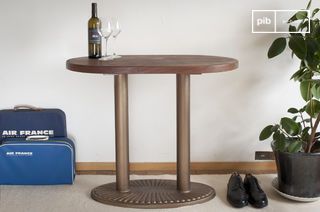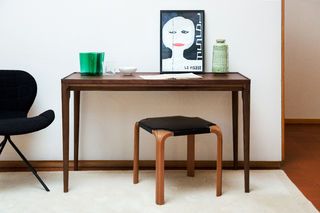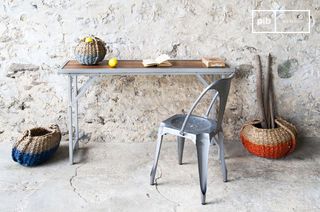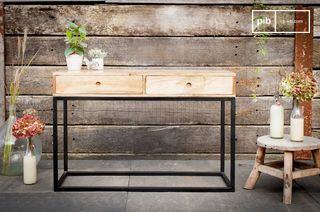Entryway consoles
Entrance consoles visually structure the space right from the threshold. Positioned against a wall, they serve as practical holders for everyday objects: keys, mail, pocket trays. Their shallow depth allows smooth circulation in high-traffic areas. In wood, metal or marble, each entrance console defines a functional focal point while blending in with the lines of the environment. Depending on the model, it can include a discreet drawer or a low shelf for more space-saving storage.
read more >Filters

Small oval wooden dining tableWashington
€580 €520-10%
10 festive days
10% off our tables and consoles
Welcome your guests in style · Limited stock

Functional organization around an entrance console
The entrance console fulfills a clear utilitarian function: to place objects carried or used on a daily basis, without disrupting circulation. This additional piece of furniture provides a quick support surface as soon as you enter the home. It can accommodate items such as a pocket divider, key ring, letter or notebook. When placed under a wall-mounted mirror, it completes a coherent whole, useful for final adjustments before going out.
Formal characteristics and adaptation to restricted spaces
Entrance consoles are generally between 70 and 100 cm wide, with a depth of around 35 cm. This compactness enables them to be installed in corridors, narrow halls or secondary spaces. The legs are often unobstructed, so as not to detract from visual perception. The top, sometimes accompanied by a drawer, is space-saving but sufficient for the intended use. Some models add a lower shelf, useful for baskets or light shoes. Materials vary according to the desired ambience: solid wood for a warm look, metal for a more graphic interpretation, glass or marble to lighten the overall visual effect.
Coherent layout and link with the rest of the furnishings
An entrance console acts as a visual threshold to the interior. It must therefore interact with the other furniture elements, especially if it is visible from the living room or kitchen. The choice of color, material and volume all contribute to this overall coherence. If the entrance is not partitioned, the console can serve as a transition between zones: marking the boundary of a space, without creating an enclosure. Placed on its own or accompanied by a mirror, a wall-mounted coat rack or a light fixture, it creates a reception point that is both legible and discreet.
Discreet yet structuring, the entrance console meets a dual requirement: immediate use and spatial integration. Its apparent simplicity masks a genuine logic of layout and functional legibility.



